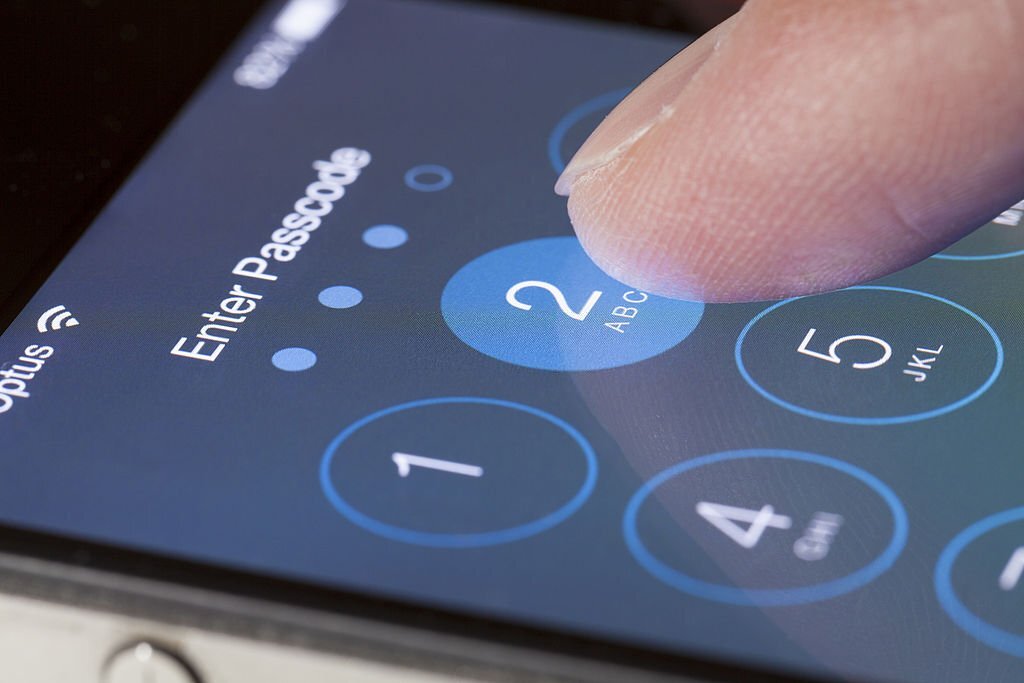In today’s digital era, security is of utmost importance. As we navigate through the online world, we often come across the term “passcode.” But what is Passcode?
In this article, we’ll unravel the mystery behind passcodes, various types of passcodes, tips for creating strong passcodes and their role in ensuring the safety of our personal information. Let’s dive in!
What is Passcode?
A passcode is a secret sequence of characters that allows access to a restricted system or account. It serves as a security measure to protect sensitive information from unauthorized users.
To reiterate and further emphasize, a Passcode is a unique combination of characters that serves as a security measure to authenticate a user’s identity and grant them access to specific information, services, or devices. It acts as a protective barrier, keeping our sensitive data and accounts safe from unauthorized access.
Key Takeaway
- A passcode, sometimes referred to as a password or PIN.
- Numeric passcodes are sequences of numbers that serve as a key to unlock a device or access an account.
- Alphanumeric passcodes combine letters and numbers to create a more complex and secure code.
- Longer passcodes with more character variety are harder to crack. Aim for a minimum of 8 – 12 characters.
- Steer clear of easily guessable information, such as birthdays or common dates.
Why are Passcodes Important?
Passcodes play a crucial role in safeguarding our digital lives, from social media accounts to online banking.
They ensure that only authorized individuals can access sensitive data and personal information.
Moreover, strong passcodes help prevent unauthorized access, identity theft, and cybercrimes.
Passcode Vs. Password
While passcodes and passwords may seem interchangeable, there’s a subtle difference between the two.
Passcodes typically refer to a sequence of digits, such as a PIN (Personal Identification Number) for your bank account. Passwords, on the other hand, are more complex, often consisting of letters, numbers, and special characters.
Types of Passcodes
There are various types of passcodes, each with its own level of security and usability. Here are some of the most common ones:
Numeric Passcodes
Numeric passcodes are sequences of numbers used to access a system or account. They are easy to remember and input, making them popular for devices such as smartphones and ATMs.
However, they can be less secure than other types of passcodes due to their limited character set.
They’re commonly used for:
- ATM PINs
- Mobile device lock screens
- Credit card verification
Alphanumeric Passcodes
Alphanumeric passcodes combine letters and numbers, increasing the possible combinations and making them more secure than numeric passcodes.
They are commonly used for online accounts and other digital services. These are frequently used for:
- Email accounts
- Social media profiles
- Online banking
Pattern-based Passcodes
Pattern-based passcodes involve drawing a specific pattern on a touchscreen or grid to gain access. They are visually intuitive and user-friendly but may be less secure if the pattern is simple or easily guessed.
Biometric Passcodes
Biometric passcodes use unique physical traits, such as fingerprints, facial recognition, or iris scans, to authenticate users.
They offer a high level of security and convenience but may be vulnerable to spoofing or privacy concerns.
Passphrases
A passphrase is a sequence of words or phrases that can be used as a passcode. They provide an additional layer of security due to their length and complexity. Passphrases are often employed in:
- Cryptography
- Secure Wi-Fi networks
- Online platforms with heightened security requirements
How to Create a Strong Passcode
A strong passcode can significantly reduce the risk of unauthorized access. Keep these tips in mind when creating your passcode:
1. Length Matters
A longer passcode is harder to crack, so aim for a minimum of 12 characters.
2. Mix It Up
Combine uppercase and lowercase letters, numbers, and special characters, and include a mix of letters, numbers, and special characters when possible to create a more robust passcode.
3. Avoiding Personal Information
Don’t use personal information such as birthdates, names, or addresses in your passcode. This information is often publicly available and can be easily guessed by hackers.
4. Using Passcode Managers
Passcode managers can help you create, store, and manage strong passcodes for all your accounts.
They can generate complex passcodes and autofill them when required, reducing the risk of forgetting or reusing passcodes.
Implementing Passcodes in Everyday Life
Passcodes are essential for protecting our digital lives. Here’s how to implement them effectively in various devices and applications:
Devices and Applications
Ensure that you have a unique passcode for every device and account you use, such as your smartphone, computer, email, and social media accounts. This way, even if one passcode is compromised, the others remain secure.
Two-Factor Authentication
Two-factor authentication (2FA) adds an extra layer of security by requiring a second form of identification in addition to your passcode. This could be a fingerprint, a one-time code sent to your phone, or a physical security key.
Enabling 2FA on your accounts significantly reduces the risk of unauthorized access.
Staying Ahead of the Curve: Emerging Passcode Technologies
As technology evolves, so do the methods of securing our data. Let’s take a look at some of the latest developments in passcode technology:
1. Biometric Authentication
Biometric authentication uses unique physical characteristics, such as fingerprints or facial recognition, to verify a user’s identity.
This method adds an extra layer of security, as it’s much harder to replicate someone’s biometric data compared to guessing a passcode.
2. Two-Factor Authentication (2FA)
Two-factor authentication requires users to provide two separate forms of identification, typically a passcode and a second authentication factor, like a fingerprint or a unique code sent to a registered mobile device. This makes it more challenging for unauthorized users to gain access to your accounts.
3. One-Time Passcodes (OTP)
One-time passcodes are temporal, single-use codes generated by an authentication app or sent via text message to a user’s registered mobile device. They provide an added layer of security by ensuring that even if someone intercepts the code, it will be useless once it has been used.
Frequently Asked Questions
What’s the difference between a passcode and a password?
A passcode typically refers to a sequence of digits (e.g., a PIN), while a password is more complex and can include letters, numbers, and special characters.
How can I create a strong passcode?
Use a combination of letters, numbers, and special characters, avoid personal information, and consider using a passcode manager to generate and store complex passcodes.
What is two-factor authentication (2FA)?
2FA is an additional security measure that requires a second form of identification, such as a fingerprint or a one-time code, in addition to your passcode.
Are biometric passcodes more secure than other types?
Biometric passcodes can offer a higher level of security and convenience, but they may be vulnerable to spoofing or privacy concerns.
Should I use the same passcode for all my accounts?
No, it’s essential to use unique passcodes for each account to minimize the risk of unauthorized access.
What is the purpose of a passcode?
The primary purpose of a passcode is to authenticate a user’s identity and protect their personal information from unauthorized access.
How often should I change my passcode?
It’s generally recommended to change your passcode every 60-90 days, or immediately if you suspect a security breach.
Can I use the same passcode for multiple accounts?
It’s not advisable to use the same passcode for multiple accounts, as it increases the risk of unauthorized access to all your accounts if one is compromised.
How can I create a strong passcode?
A strong passcode should be at least 12 characters long and include a mix of uppercase and lowercase letters, numbers, and symbols. Avoid using easily guessable information or common words.
What should I do if I forget my passcode?
If you forget your passcode, most platforms have a “Forgot Passcode?” or “Reset Passcode” option that allows you to recover or create a new passcode after verifying your identity through a series of security questions or other authentication methods.
Conclusion: Safeguarding Your Digital Life
Don’t underestimate the power of a robust passcode – it’s the first line of defense in our increasingly connected world. Remember to keep your passcodes secure and use additional security measures like two-factor authentication when available.
In summary, understanding what Passcode is? and its role in protecting our digital lives is essential. By using strong, unique passcodes and staying informed about emerging security technologies, we can effectively safeguard our personal information and enjoy a more secure online experience.









